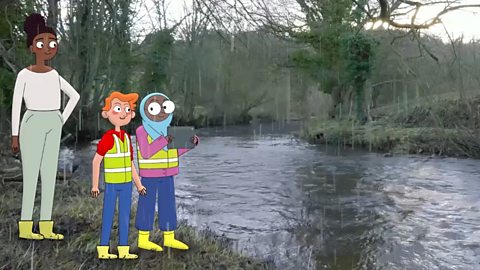Watch: Reading maps
Play the video to watch Ayesha and James learn how to read maps so they can find the treasure.
Dad: OK, so hereÔÇÖs the treasure map. ÔÇśXÔÇÖ marks the spot!
James: Awesome! I can't wait to find out what the treasure is!
Ayesha: WeÔÇÖll need a compass.
Dad: Do you remember how it works?
Ayesha: It has four main points: north, east, south and west. The needle in the middle always points north. Look! Even when I turn the compass, the needle still points in the same direction.If we turn so that north on the dial lines up with the point of the needle, it means weÔÇÖll also be facing north. Now we can work out where east, south and west are too!
James: Ah, so that church is to the west of us and that park is to the south of us.
Ayesha: Hmm. Where's that red lake? I can't see it anywhere!
James: Oh! That was me, sorry!
Ayesha: What are those lines on the map?
James: Those help to show exactly where things are.Look! Do you see that park on the map?
Ayesha: Yes!
James: There are two lines that meet, and if you follow the lines to the edge of the map, they each have a number.So that park is atÔÇŽ 33,11.
Ayesha: Can I try?
James: Sure! Remember though, we have to read the number that goes across the bottom before we read the number going up the side.
Ayesha: So we could say that we go along the hallway and up the stairs.
James: Haha, I suppose so.
Dad: The map shows the treasure is at 36,11.
Ayesha: So itÔÇÖs here!
James: So the treasure is there and weÔÇÖre here, which means we need to go south.
Ayesha: So we need to go that way!But dadÔÇŽ thereÔÇÖs nothing here.
Dad: Look at that view.
James: Woah!
Dad: ThatÔÇÖs the real treasure.
James: ItÔÇÖs beautiful!
Map-reading tips
Take a look at useful tips with compasses and maps:
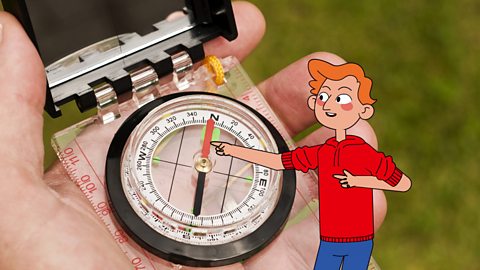
Image caption, Finding north
To find north, hold the compass in your hand and turn around until the coloured needle points to ÔÇśNÔÇÖ.
Image caption, A compass showing 8 points: north, north-east, east, south-east, south, south-west, west and north-west.
Image caption, A compass can help you read a map by showing you which direction is which.
Image caption, Maps are really useful if you're lost. They can help you find where you are and where you should be going.
Image caption, Maps are really important when climbing mountains. They can help you in case the weather turns nasty and you canÔÇÖt see where you are going.
Image caption, Maps are easier to read by the seaside because looking at the sea and the land helps you decide which way to hold the map.
1 of 6
Things to remember
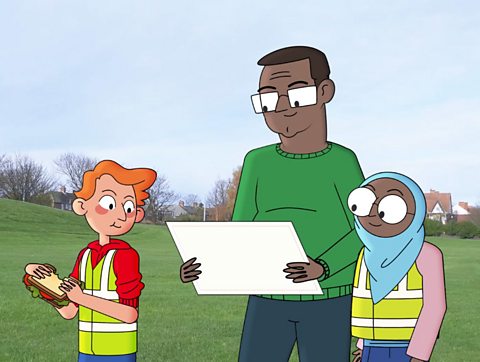
To read a map you need to remember:
- A compass can help you find the right direction.
- Grid references can help find a place.
- You can find what symbols mean by using a key.
- There are different types of map, for example:
- Ordnance Survey (O/S) maps
- Street maps
- Atlases and globes

Finding grid references
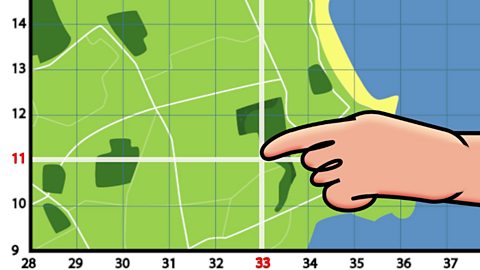
This person is pointing to the park. It is located where two lines cross. If you follow the lines to the edge of the map you will see a number.
Tip:
First you find the number that goes across the bottom, which is 33 here.
Then you find the number going up the side, which is 11 here, so the grid reference is 3311.
You may see brackets around a grid reference and a comma to separate them, for example: (33,11).

Using compass points
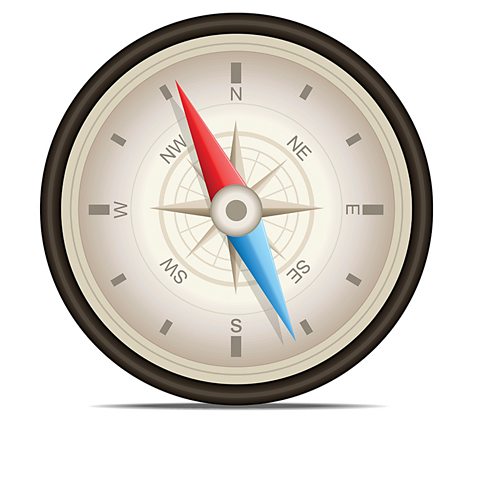
Sometimes the direction you need to take isnÔÇÖt exactly north, east, south or west and it might be in the middle of two points:
- north-east (NE) is in-between north and east.
- south-east (SE) is in-between south and east.
- south-west (SW) is in-between south and west.
- north-west (NW) is in-between north and west.
Activity: Quiz ÔÇô Map-reading
Bitesize Primary games. gameBitesize Primary games
Play fun and educational primary games in science, maths, English, history, geography, art, computing and modern languages.

More on Fieldwork
Find out more by working through a topic
- count8 of 12
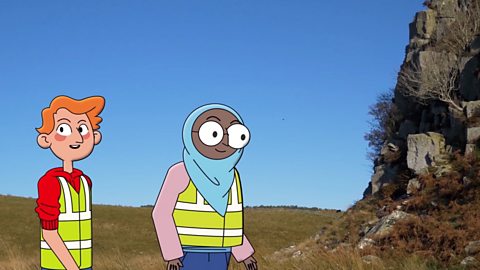
- count9 of 12
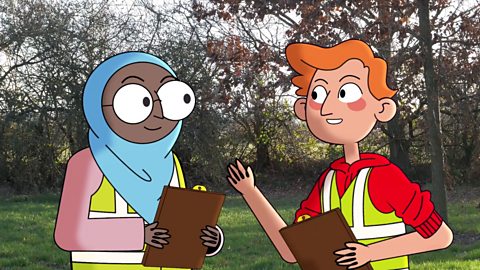
- count10 of 12
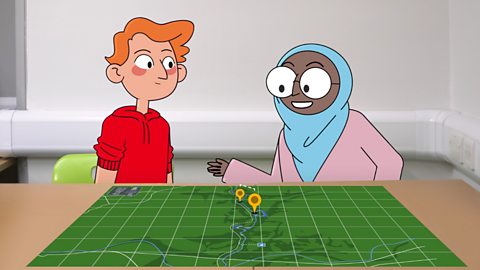
- count11 of 12
